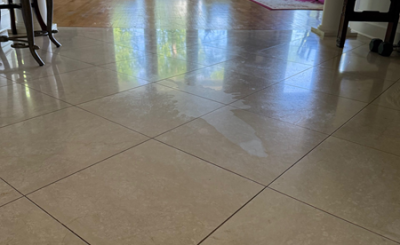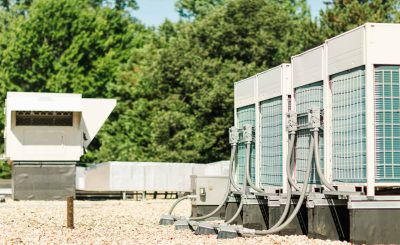Historical Use of Asbestos in Military Housing
Asbestos was widely used in military housing for many years due to its excellent insulation and fire-resistant properties. The military utilized asbestos in various applications, including:
- Insulation for walls and ceilings
- Piping and electrical wiring protection
- Boiler and engine room insulation
This widespread use occurred before the dangers of asbestos were fully understood, leading to significant exposure among military personnel and their families.
Common Asbestos-Containing Materials in Military Homes
In military homes, asbestos can be found in several materials, such as:
- Floor tiles and adhesives
- Roofing materials
- Textured paints and wall coverings
These materials pose a risk, especially if they become damaged or disturbed, releasing harmful fibers into the air.
Health Risks Associated with Asbestos Exposure
Exposure to asbestos can lead to serious health issues, including:
- Lung cancer
- Mesothelioma, a rare cancer linked to asbestos
- Asbestosis, a chronic lung condition
Symptoms of these diseases may not appear until many years after exposure, making it crucial for veterans and their families to be aware of their potential risks.
Air Force Bases with Known Asbestos Exposure
Domestic Air Force Bases with Asbestos
Many Air Force bases in the United States have been identified as having asbestos exposure. Some notable bases include:
- Chanute Air Force Base
- George Air Force Base
- Lackland Air Force Base
- Mather Air Force Base
- Offutt Air Force Base
- Tinker Air Force Base
- Wright-Patterson Air Force Base
These bases were built before the dangers of asbestos were widely known, leading to potential health risks for service members and their families.
International Air Force Bases with Asbestos
Asbestos was also used in several international Air Force bases. Some of these bases are:
- Aviano Air Base (Italy)
- Clark Air Base (Philippines)
- Kadena Air Base (Japan)
- Ramstein Air Base (Germany)
- Suwon Air Base (South Korea)
- Torrejon Air Force Base (Spain)
Despite cleanup efforts, asbestos remains a concern at many of these locations, with reports of health issues among veterans.
Notable Cases of Asbestos Exposure on Air Force Bases
Several cases highlight the serious risks associated with asbestos exposure:
- Kadena Air Base: Many veterans have reported health problems linked to asbestos exposure here.
- Edwards Air Force Base: A significant amount of money was spent to remove asbestos from the hospital built in 1955.
- Lackland Air Force Base: Families have filed lawsuits due to ongoing asbestos issues in base housing.
These cases illustrate the long-term impact of asbestos exposure on Air Force veterans and their families.
Vietnam Veterans and Asbestos Exposure
Asbestos Use During the Vietnam War
During the Vietnam War, asbestos was widely used in various military applications. This included:
- Building materials: Asbestos was used in the construction of barracks and other facilities.
- Vehicle insulation: Many military vehicles contained asbestos for heat resistance.
- Protective gear: Some equipment, like fireproof suits, also had asbestos components.
Health Impacts on Vietnam Veterans
Veterans who served in Vietnam face significant health risks due to asbestos exposure. Common health issues include:
- Mesothelioma: A rare cancer linked directly to asbestos exposure.
- Lung cancer: Increased risk due to inhaling asbestos fibers.
- Asbestosis: A chronic lung condition caused by asbestos.
Legal Cases Involving Vietnam Veterans
Many Vietnam veterans have sought legal action due to asbestos-related illnesses. Key points include:
- Compensation claims: Veterans can file claims for medical expenses and suffering.
- Class action lawsuits: Groups of veterans have banded together to seek justice.
- Ongoing litigation: Many cases are still in progress, highlighting the long-term impact of asbestos exposure.
Health Risks of Asbestos Exposure for Air Force Veterans
Common Diseases Linked to Asbestos
Asbestos exposure can lead to several serious health issues, particularly for Air Force veterans. Some of the most common diseases include:
- Mesothelioma: A rare cancer that affects the lining of the lungs, heart, or abdomen. Veterans account for 1 in 3 mesothelioma cases each year.
- Asbestosis: A chronic lung disease caused by inhaling asbestos fibers, leading to scarring of lung tissue.
- Lung Cancer: Increased risk for veterans who have been exposed to asbestos, especially if they are smokers.
Symptoms of Asbestos-Related Illnesses
Veterans exposed to asbestos may not notice symptoms for many years. Common symptoms to watch for include:
- Shortness of breath: Difficulty breathing, especially during physical activity.
- Persistent cough: A cough that does not go away or worsens over time.
- Chest pain: Discomfort or pain in the chest area, which may be sharp or dull.
Long-Term Health Monitoring for Veterans
Due to the risks associated with asbestos exposure, long-term health monitoring is crucial. Veterans should consider:
- Regular check-ups: Annual visits to a healthcare provider for lung health assessments.
- Screening tests: X-rays or CT scans to detect any early signs of lung disease.
- Awareness of symptoms: Staying informed about the symptoms of asbestos-related diseases to seek timely medical help.
Asbestos Management and Abatement in Military Housing
Current Policies on Asbestos Management
The management of asbestos in military housing is crucial for the safety of service members and their families. The Department of Defense (DoD) has established several policies to address this issue:
- Regular Inspections: Housing units are inspected to identify any asbestos-containing materials.
- Training Programs: Personnel are trained on how to handle asbestos safely and recognize potential hazards.
- Reporting Procedures: There are clear guidelines for reporting any suspected asbestos issues in military housing.
Challenges in Asbestos Abatement
Despite the policies in place, there are significant challenges in removing asbestos from military housing:
- Cost: Abatement can be expensive, leading to delays in necessary actions.
- Safety Concerns: Removing asbestos can release harmful fibers into the air, posing risks to workers and residents.
- Lack of Awareness: Many residents may not be aware of the presence of asbestos, making it harder to manage effectively.
Success Stories in Asbestos Removal
There have been positive developments in asbestos abatement efforts:
- Successful Removals: Some military bases have successfully removed asbestos from older buildings, improving safety.
- Community Engagement: Programs that involve residents in safety discussions have raised awareness and led to better reporting.
- Innovative Techniques: New technologies are being developed to safely manage and remove asbestos, reducing risks during the process.
Legal Rights and Compensation for Affected Veterans
Filing a Claim for Asbestos Exposure
Air Force veterans who have been exposed to asbestos during their service may have the right to file a claim with the Department of Veterans Affairs (VA). Here are some key points to consider:
- Eligibility: Veterans must show that their asbestos exposure occurred while serving in the military.
- Types of Claims: Claims can include disability compensation for illnesses related to asbestos exposure, such as mesothelioma.
- Documentation: It’s important to gather medical records and service history to support the claim.
Types of Compensation Available
Veterans may be eligible for various forms of compensation, which can help cover medical expenses and other costs:
- Disability Compensation: Monthly payments for veterans with service-related disabilities.
- Dependency and Indemnity Compensation (DIC): Financial support for family members of veterans who have passed away due to service-related conditions.
- Special Monthly Compensation (SMC): Additional benefits for veterans with severe disabilities or special needs.
Notable Legal Cases and Settlements
There have been several important legal cases involving Air Force veterans and asbestos exposure:
- Asbestos Trust Fund Claims: Veterans can file claims against trust funds set up by asbestos companies for victims of asbestos-related diseases.
- Mesothelioma Lawsuits: Veterans may also pursue lawsuits against manufacturers of asbestos products, seeking compensation for their illnesses.
- Settlements: Many cases result in settlements that provide financial relief to affected veterans and their families.
Preventative Measures for Asbestos Exposure
Safety Protocols in Military Housing
To reduce the risk of asbestos exposure in military housing, several safety protocols should be followed:
- Regular Inspections: Housing units should be inspected regularly for asbestos-containing materials (ACMs) to identify potential hazards.
- Clear Communication: Residents should be informed about the presence of asbestos and the necessary precautions to take.
- Emergency Procedures: Establish clear procedures for what to do if asbestos is disturbed or damaged.
Protective Equipment for Military Personnel
Military personnel should be equipped with protective gear to minimize exposure risks:
- Respirators: Use respirators that are specifically designed to filter out asbestos fibers.
- Protective Clothing: Wear disposable coveralls to prevent asbestos fibers from sticking to clothing.
- Gloves: Use gloves when handling materials that may contain asbestos.
Educational Programs on Asbestos Risks
Education is key to preventing asbestos exposure:
- Training Sessions: Conduct training for military personnel on the dangers of asbestos and how to handle it safely.
- Informational Materials: Provide brochures and resources that explain the risks associated with asbestos exposure.
- Awareness Campaigns: Launch campaigns to raise awareness about asbestos hazards in military housing and the importance of safety measures.
Support Resources for Veterans Affected by Asbestos
Veterans Affairs Benefits
Veterans who have been exposed to asbestos during their service can access various benefits through the Department of Veterans Affairs (VA). These benefits may include:
- Healthcare Services: Coverage for medical treatments related to asbestos exposure.
- Financial Compensation: Monthly payments for veterans diagnosed with asbestos-related illnesses.
- Counseling Services: Support for mental health issues stemming from exposure.
Support Groups and Counseling
Connecting with others who have faced similar challenges can be beneficial. Veterans can find support through:
- Local Support Groups: Many communities have groups specifically for veterans affected by asbestos.
- Online Forums: Websites such as MesotheliomaGuide and social media groups where veterans share experiences and get advice.
- Counseling Services: Professional help for dealing with the emotional impact of illness.
Medical Resources and Treatment Options
Veterans diagnosed with asbestos-related diseases have access to specialized medical care. Important resources include:
- VA Medical Centers: Facilities equipped to treat conditions like mesothelioma and lung cancer.
- Veterans Community Care Program: Allows veterans to seek care outside the VA system if needed.
- Specialized Clinics: Some clinics focus specifically on asbestos-related health issues, providing tailored treatment plans.
The Role of the Department of Defense in Addressing Asbestos
DoD Policies on Asbestos
The Department of Defense (DoD) has recognized the serious risks associated with asbestos exposure in military housing including lung cancer risk to veterans. To address these concerns, the DoD has implemented several policies aimed at managing and reducing asbestos hazards. Key policies include:
- Regular Inspections: Conducting routine checks of military housing to identify and assess asbestos presence.
- Training Programs: Providing training for personnel on how to handle asbestos safely and recognize potential hazards.
- Reporting Procedures: Establishing clear guidelines for reporting asbestos-related issues to ensure timely action.
Recent Reports and Findings
Recent evaluations have highlighted ongoing issues with asbestos in military housing. Some findings include:
- Presence of Asbestos: Many military family housing units still contain asbestos materials, posing health risks to residents.
- Inadequate Management: Reports indicate that some bases have not maintained proper records or management plans for asbestos.
- Need for Action: There is a pressing need for the DoD to enhance its strategies for asbestos abatement and management.
Future Plans for Asbestos Mitigation
Looking ahead, the DoD is focusing on several initiatives to improve asbestos management:
- Enhanced Abatement Strategies: Developing more effective methods for safely removing asbestos from military housing.
- Increased Funding: Allocating more resources for asbestos management and removal projects.
- Community Engagement: Involving military families in discussions about asbestos risks and management efforts to ensure transparency and trust.
Impact of Asbestos Exposure on Military Families
Health Risks for Family Members
Asbestos exposure is not just a concern for military personnel; it also poses serious health risks to their families. Living in military housing that contains asbestos can lead to various health issues, including:
- Lung diseases: Family members may develop conditions like asbestosis or lung cancer.
- Mesothelioma: This rare cancer is directly linked to asbestos exposure and can affect anyone living in contaminated environments.
- Secondary exposure: Family members can be affected by asbestos fibers brought home on clothing or equipment.
Legal Rights of Military Families
Military families have certain legal rights when it comes to asbestos exposure. They can:
- File claims: Families can file claims for health issues related to asbestos exposure.
- Seek compensation: There are various compensation options available for affected families.
- Access legal support: Legal resources are available to help navigate the complexities of asbestos-related claims.
Support Resources for Affected Families
Support is crucial for families dealing with the effects of asbestos exposure. They can access:
- Counseling services: Emotional support and counseling can help families cope with health challenges.
- Medical resources: Veterans Affairs provides medical resources for families affected by asbestos-related illnesses.
- Support groups: Connecting with others in similar situations can provide comfort and information.
Historical Overview of Asbestos Use in the Military
Early Adoption of Asbestos in Military Applications
Asbestos was first used in the military in the late 19th century, but its use really took off during World War II. The military valued asbestos for its:
- Fire resistance: It helped protect against fires in ships and buildings.
- Insulating properties: It kept equipment and living spaces warm.
- Durability: Asbestos materials lasted a long time, making them cost-effective.
Changes in Asbestos Regulations Over Time
As awareness of the health risks associated with asbestos grew, regulations began to change:
- 1970s: The dangers of asbestos became widely known, leading to stricter regulations.
- 1980s: The military started to phase out asbestos in new constructions.
- 1990s: Most military branches stopped using asbestos altogether, but many older buildings still contain it.
Impact of Asbestos on Different Military Branches
All branches of the military used asbestos, but some faced higher risks:
- Navy: Asbestos was heavily used in ships, especially in engine rooms.
- Air Force: Aircraft and bases contained asbestos in insulation and other materials.
- Army and Marines: Ground vehicles and barracks also had asbestos materials.
Understanding the history of asbestos in the military is crucial for veterans and their families, as many may still face health risks from past exposure.








